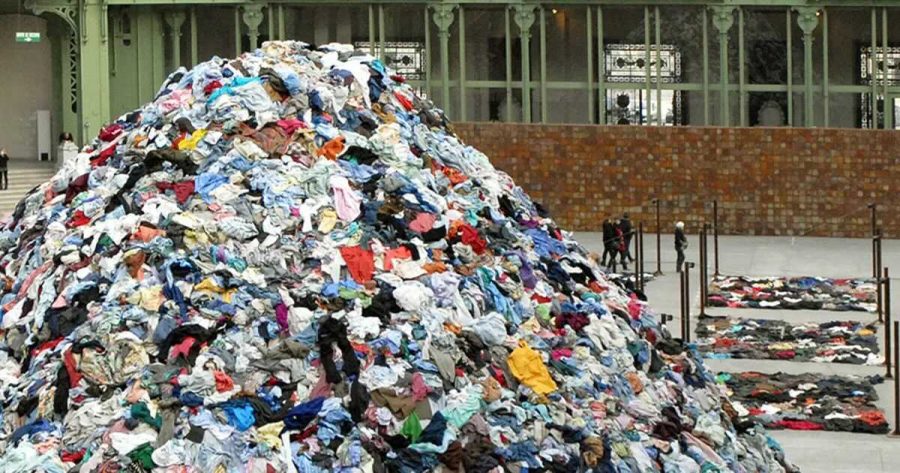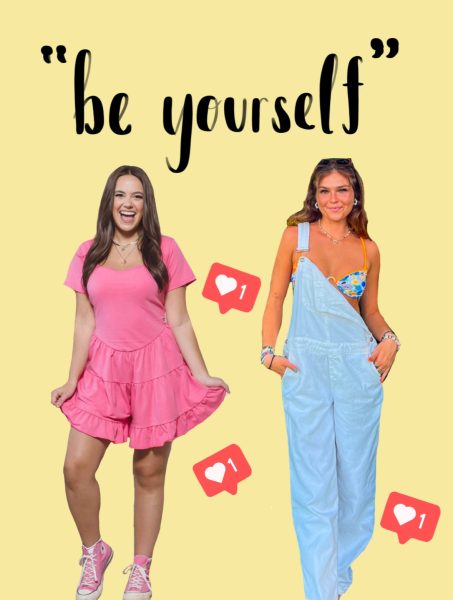Consumers Must Acknowledge The True Cost of Fast Fashion
In the United States, 11 million tons of clothing end up in landfills every year.
If you have been clothes shopping within the last decade or two, it is almost guaranteed that you have supported fast fashion brands. In recent years, the fashion industry has completely evolved, allowing consumers to buy anything from cocktail dresses to sweatpants in one convenient location for shockingly low prices. It seems as though the content of retail stores seems to change every day, and in reality, it often does.
In the age of social media, word travels fast. The same can be said about fashion trends. After seeing a photo on Instagram of your favorite celebrity or influencer, you may have the desire to replicate their outfit. Brands like Shein, Zaful, H&M and Zara cater to this, churning out new clothes every week to align with current trends.
YouTuber Emma Chamberlain is a perfect example of this phenomenon. There have been several instances where Chamberlain has posted a YouTube video or Instagram photo showing off her outfit and within a week, the shelves in stores like H&M and Forever 21 are filled with things like mom jeans, bike shorts, yoga pants and Dr. Martens.
A store’s ability to completely change its inventory based on what is popular may not seem like such a bad thing. It allows consumers to constantly keep up with the trends. However, there are several major problems with this system. Once a store replaces their old items with the new, trendy ones, the old ones immediately become irrelevant. No matter how much the stores mark the clothes down, most people will still choose the new, trendy items.
Stores like Zara have admitted to receiving bi-weekly deliveries of completely new merchandise. Fashion Nova’s CEO has even said that the company puts out 600-900 new styles per week. One can imagine how many clothes go to waste as a result. In fact, H&M recently came under fire for allegedly burning more than $4.3 billion worth of clothes that they were unable to sell.
Due to its low prices and ever-changing inventory, the fashion industry perpetuates this idea that the clothes we wear are disposable. Because the clothing produced by fast fashion industries is so cheap, it is easy to just buy brand new clothes when the trends change and toss the old ones aside. A study done by the Ellen MacArthur Foundation shows that clothing utilization (how long we wear our clothes for) has dropped by 36% over the last 20 years. People only wear an item of clothing for an average of seven to ten times before getting rid of it.
As a result, 11 million tons of clothing end up in landfills annually in the United States alone. Even if these clothes are taken to Goodwill they typically end up in landfills anyway. These clothes are not made to last, and have little to no resale value. As a result, Goodwill spends over $7 million dumping clothing into landfills in California alone.
In order to produce clothes for such low prices, they are made from cheap, plastic-based materials filled with lead, pesticides and other dangerous chemicals that unfortunately release mass amounts of greenhouse gases into the air while sitting in landfills. This does not even cover the amount of air pollution that comes from the production of these clothes. The fashion industry alone emits about 1.2 billion tons of greenhouse gases and contributes to 20% of the world’s water pollution.
Considering their toxic effect on the environment, one can imagine how dangerous these chemicals are for the garment workers. These employees work up close with chemicals like benzothiazole, which has been linked to cancer and respiratory diseases. Despite these dangerous conditions, garment workers get paid next to nothing. Research from the Workers’ Rights Consortium shows that garment workers only make an average of $147 per month, which is far from a livable wage.
Instead of supporting these brands, buying pre-owned clothing from thrift stores or websites like Poshmark and Depop is a much more sustainable option. Additionally, there are plenty of ethical brands that you can support, such as Spell, Afends, CHNGE, Frankie and nu-in. While these clothes may seem pricey initially, the expense pays off in the long run because these clothes are able to hold up much longer than those made by fast fashion brands like H&M, Urban Outfitters, Shein, Fashion Nova, and Zara.
At first glance, these clothes may seem like a cheap, convenient way to improve your wardrobe. In reality, the fast fashion industry exploits workers in order to produce the cheapest clothes possible, creates millions of tons of waste every year, and is one of the leading causes of pollution. Additionally, fast fashion brands have destroyed any individuality in the fashion industry, as people are confined to whatever is popularized by celebrities. The most fun part of fashion is arguably the ability to form your own personal style, and fast fashion has stifled this creativity. By limiting the amount of clothes you purchase from fast fashion brands, you are able to support more sustainable companies, as well as have more creativity to form your own style.

Katie Gillis, class of 2022, is co-Editor-in-Chief of The Searchlight. At Walpole High School, she captains the indoor and outdoor track teams and is participates...













